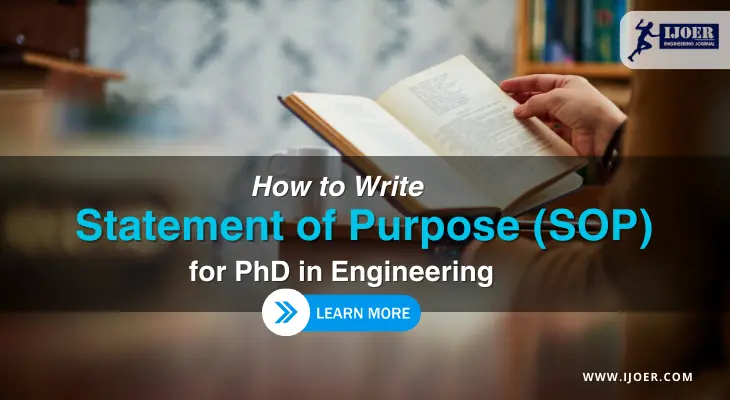
Pursuing a PhD in Engineering is a significant academic and professional milestone. Among the many requirements for admission, one document carries exceptional weight — the Statement of Purpose (SOP). This is more than just a formality; it’s your personal pitch to the admissions committee, showing them who you are, what drives you, and why you’re a perfect fit for their program.
In this guide, we’ll break down how to craft a compelling, well-structured, and authentic SOP that truly stands out.
An SOP is not simply a list of your qualifications. It’s your opportunity to:
Think of it as telling a story — the story of your academic journey and where it’s headed. If you are struggling with aligning your academic history to future goals, our guide on Research Proposal Writing for PhD in Engineering can give you additional direction.
A well-organized SOP is easier to read and more persuasive. Here’s a proven structure:
“My fascination with structural dynamics began during my undergraduate internship, where I worked on designing earthquake-resistant building components. What started as a university project soon became a research passion — the intricate balance between safety, efficiency, and innovation in engineering structures. This passion has guided my academic journey and inspires my pursuit of a PhD in Civil Engineering at [University Name], where I aim to explore advanced computational models for disaster-resilient infrastructure.”
A powerful SOP is honest, clear, and shows your commitment to advancing knowledge in engineering. Take your time, revise thoroughly, and let your passion shine through every sentence. You can also learn from our resources on PhD research proposals and top engineering journals for future publications.
Most universities recommend 800–1200 words, which usually fits into 1–2 pages.
Yes, but only if they are relevant to your academic or research journey.
You can have a base draft, but always customize it to reflect each program’s unique offerings.
Absolutely — referencing professors whose work aligns with your research interests shows you’ve done your homework. You may also strengthen this by aligning with government-funded engineering research projects in your field.
While academic records matter, the SOP often determines whether you stand out among equally qualified candidates.

|
Citation Indices
|
All
|
Since 2020
|
Citation |
2359 |
1680 |
h-index |
19 |
15 |
i10-index |
57 |
24 |
|
Acceptance Rate (By Year)
|
|
|
Year
|
Percentage
|
|
2023
|
9.64%
|
|
2027
|
17.64%
|
|
2022
|
13.14%
|
|
2021
|
14.26%
|
|
2020
|
11.8%
|
|
2019
|
16.3%
|
|
2018
|
18.65%
|
|
2017
|
15.9%
|
|
2016
|
20.9%
|
|
2015
|
22.5%
|